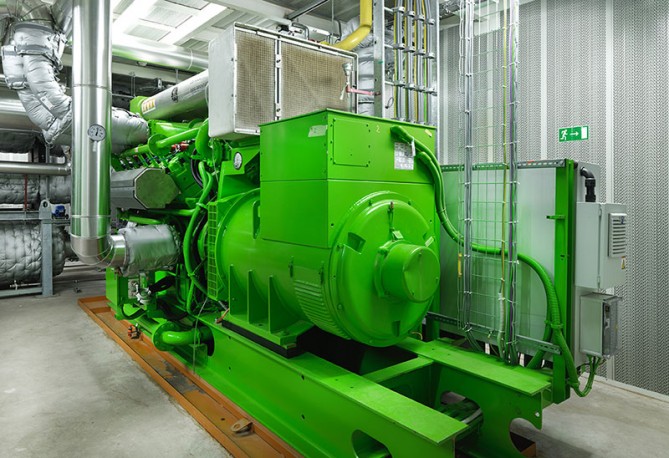

Using combined heat and power (abbreviated as CHP) sees heat and electrical power simultaneously being generated using an engine that runs on a single fuel. This can be anything from a fossil fuel (fuel oil or natural gas) to a renewable fuel (biogas or biomass).
The technology was chiefly devised to serve large buildings that have considerable heating requirements, such as hospitals.
The good news is that CHP solutions are also available for home use, known as micro-CHP systems. In terms of appearance and dimensions, the systems show a strong resemblance to conventional condensing boilers. Also good news is the fact that Leefmilieu Brussel / Bruxelles Environnement (in French) pays out grants to home owners who decide to have a CHP system fitted.

The operating principle of a combined heat and power is straightforward.
A lower consumption of fuel
Compared to a dual system involving segregated heat generation and heat production, whereby electrical power is generated in a power station and heat is produced in a boiler, using CHP allows users to save up to 20% on fuel.
A lower emission of CO2
Reduced emission levels of carbon dioxide and other harmful combustion by-products such as soot, nitrogen oxide, carbon monoxide, etc.
A lower energy bill
Subscribe to our newsletter and stay informed about energyfacts.